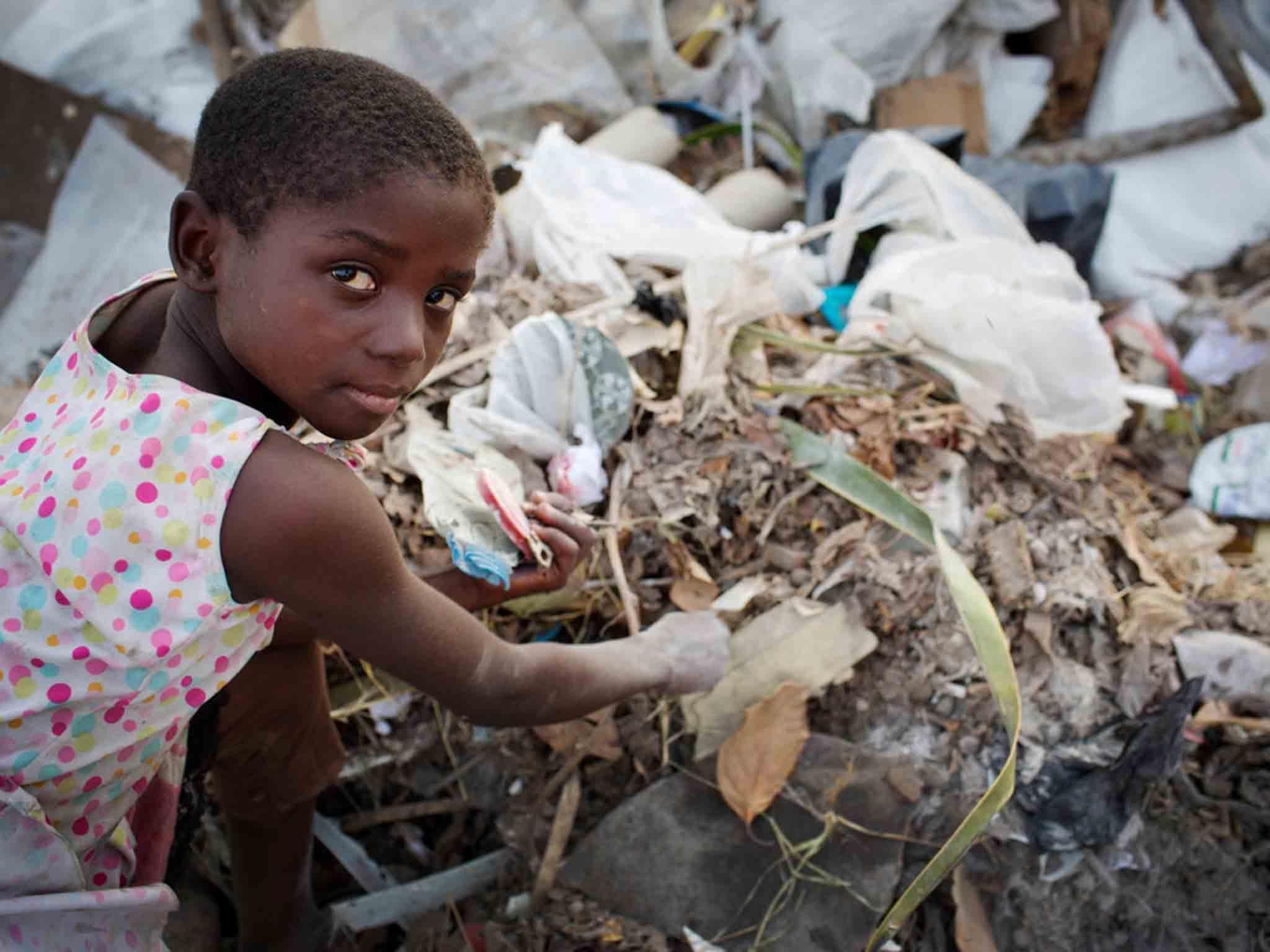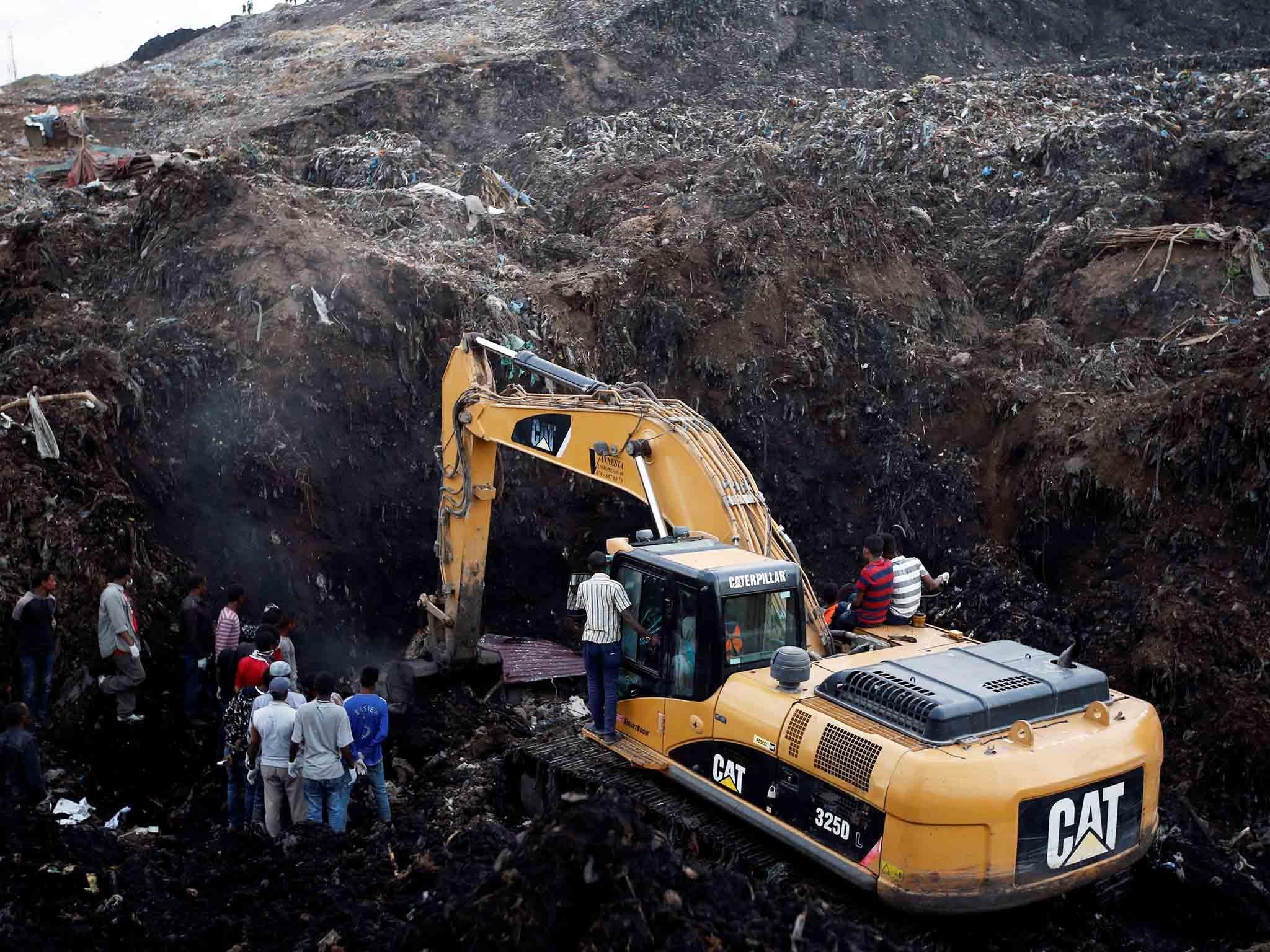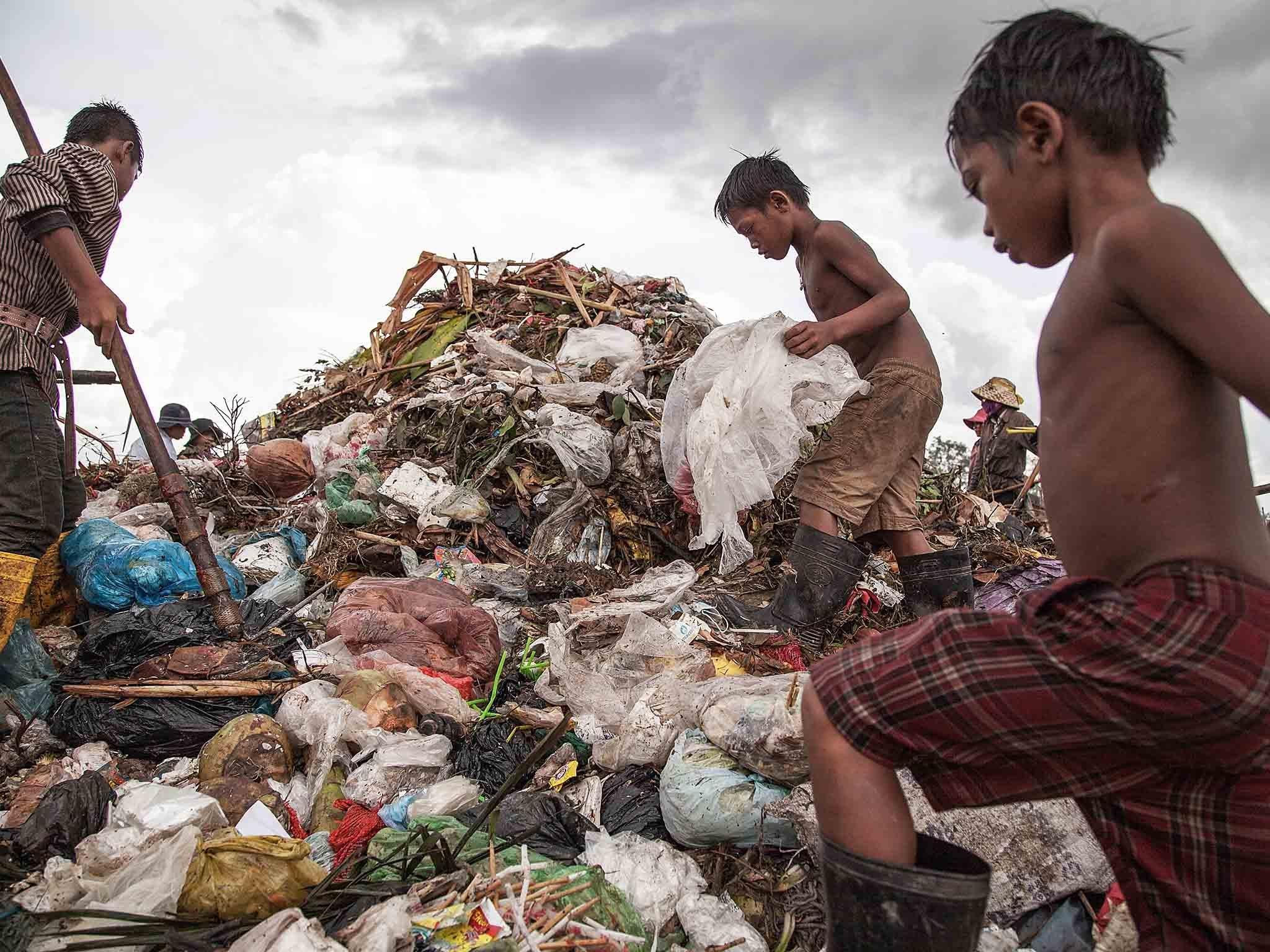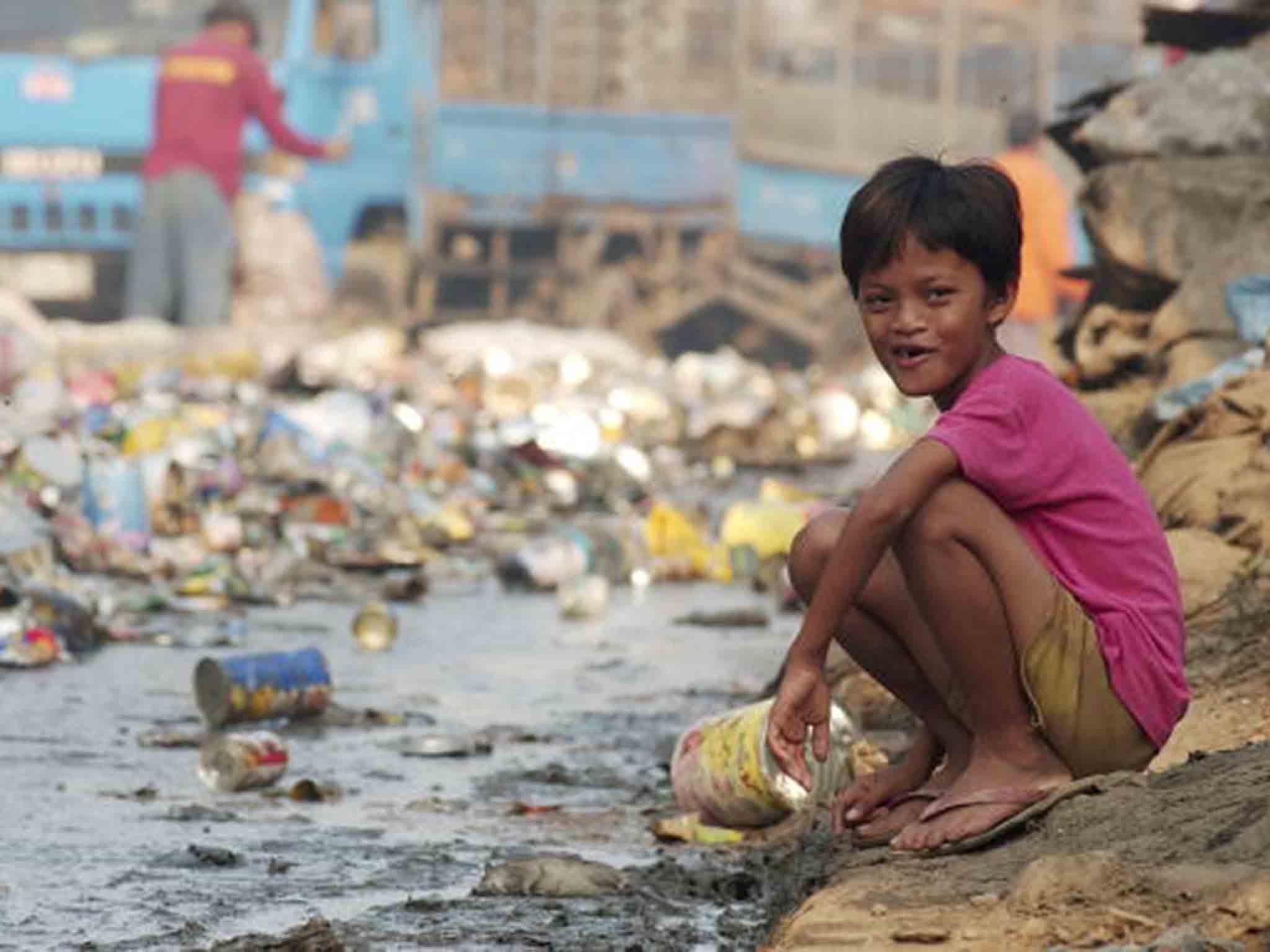Living in Landfill
Some 15 million people live and work within sprawling municipal rubbish tips around the globe

Last week dozens of people were killed and at least 49 homes destroyed after a mountain of rubbish collapsed at Ethiopia’s Koshe landfill site. Authorities aren’t yet sure what caused the deadly landslide – some blame the biogas plant being built nearby – but whatever the reason, it’s just another risk faced every day by so-called dump scavengers.
Some 15 million people live and work within sprawling municipal rubbish tips around the globe, combing through trash every day for items of the slightest value to sell for a pittance. Their communities mirror those found anywhere else in the world – neighbours become friends, and there are shops and schools and places to go to unwind after a hard day’s work – but the difference is the inescapable, oppressive backdrop of filth, danger and disease.
Families – sometimes several at a time – live in shanties made from found wood and sheets of corrugated metal and plastic, with bricks and tyres placed carefully on roofs to stop them blowing away. Surrounding these homes, stretching for as far as the eye can see and sometimes two or three storeys high, are piles and piles of medical and electronic waste, used nappies and sanitary items, general household rubbish and broken glass, not to mention dead animals and human faeces.
Under the burning sun the smell of these dumps is sickening, exacerbated by dark plumes of thick smoke billowing from piles of trash that have spontaneously combusted because of unstoppable rising methane gases. It is hell on earth, but trapped in an inescapable cycle of poverty, these people have no choice but to call it home.
Jane Walker has been working with a trash-picking community in the Philippines for more than 20 years. She happened upon the capital’s Tondo dump while on holiday, and now runs the Purple Community Fund, a charity dedicated to helping those on the fringes of society, including the thousands of people living among Manilla’s most prolific garbage site.

“The average life expectancy for someone born and raised in these environments is just 35 years old,” she says. “We were on a dumpsite with 15,000 people and from them we recorded just under 100 people who had made it to 60. Pneumonia and tuberculosis is rife.”
Indeed, pneumonia – commonly spread through a lack of hygiene – is the number one killer of children under five, accounting for more than 1,000 deaths a day worldwide according to UN statistics. A single gram of faeces can contain ten million viruses, and so as Jane notes, the dump community’s favoured method of human waste disposal, the ‘wrap and throw’, means children are exposed to life-threatening disease even before they’ve started working on the site.
Amish Das has lived inside the Boragaon landfill site in Guwahati, India, for all of his 26 years, rising early every day to scour the site to earn just enough to feed his family breakfast – a meal which, like every other, is never guaranteed. He lives with his three children, his wife and the family of his wife’s sister (her husband and two children) in a one-room shanty in the centre of the dump. He lost his youngest daughter to illness when she was two years old. “She was so sick and there was nothing I could do,” he says. “Everywhere is dirty. I wish she hadn’t died but sometimes I am thankful she won’t have to know this life.”
Women, of course, are particularly vulnerable in these environments. “When a girl is born poor her life chances are severely reduced,” says Girish Menon, CEO of charity ActionAid. “Young women have fewer rights, less access to education, sexual health services, networks, decision making, safety and control over their bodies. They are stuck – trapped in a cycle of poverty, violence and inequality.” It is no surprise, then, that of the few children that are able to go to school (many are needed to work alongside their families), most are boys, although charities such as ActionAid are working to address this. Local women’s networks, such as the one in the Mwakirunge dumpsite just outside Mombasa, Kenya, provides education and protection facilities for girls and women who work at the dump.
Ten-year-old Margaret Tsuma is one girl benefiting from such a programme. “I go to school to learn as much as I can because at home I don’t learn anything,” she says. “Before I joined school I was scavenging at the dump site all day. I really like school. It is also a better building to be in – our home is very small and is only made of cardboard and nylon.”
Margaret wants to be a teacher when she leaves school, but even with an education under her belt it’s certain that she’ll struggle to escape from the dumpsite. “There’s a huge stigma surrounding people from these communities,” says Jane. “I’ve seen the most immaculately-turned out people from the dumpsite, wearing clean clothes and looking smart, but that’s the exception rather than the rule. Waste pickers don’t have access to hot water, or even running water, so there is always a smell, which makes it difficult for children to go to school or to then get jobs. And if they do get jobs – where they could earn up to 10 times as much as they do as a waste picker – it’s still very difficult for them to make a break from the dump.”

In 2013, researchers from various non-profit organisations including the International Solid Waste Association and the University of Leeds came together to create the first Waste Atlas, an interactive map that visualises the issue and impact of global waste. Their findings were shocking. The 50 biggest active dumpsites in the world affect the daily lives of 64 million people, a figure almost equal to the population of France, and the average dumpsite covers an area equal to around 29 international football fields. Nearly 40% of the world’s trash ends up in these sites.
These figures are at odds with the fact that environmental concerns are increasingly under the global spotlight, but with the value of the global waste management market projected to reach $562bn by 2020, it’s not hard to see the catalyst for the issue. While waste management legislation is largely tight in the western world, it’s less of a priority in developing nations and as Jane says, there’s money to be made.
“Waste pickers will make around just £2.50 a day selling the items they find to ‘agents’ and scrap dealers who then sell it on,” she explains. “It’s these middlemen who often earn large profits.” And it’s often these middlemen who are embroiled in levels of corruption that make the systemic poverty of waste pickers near-impossible to untangle.
“I can only comment on the site that I worked at,” Jane says, “but at one point we tried to sell the materials directly to recycling factories. Eliminating the middlemen would mean more money for the waste pickers. But not long after we started trying to do this I got a visit from these agents and they made it clear – by showing me a gun on the dashboard of their car – that selling to them first was the only acceptable way of doing things.”
There’s ample anecdotal evidence of these waste hierarchies being overseen by notorious crime lords – “Gang warfare was pretty normal at our site. It wasn’t unusual to see a dead body on the ground” – but local governments have repeatedly turned a blind eye to the issue. “At one point they were going to start importing Japanese waste to our site,” says Jane. “The area produced more than enough of its own waste, so why would they do that if not for monetary gain?”

Scavengers are undoubtedly trapped firmly at the bottom of the waste pyramid, and as such many would argue that it’s no surprise the Ethiopian community scoffed with indignation when – following the tragedy at the Koshe site – Addis Ababa Mayor Diriba Kuma made such a vague promise: “In the long run, we will conduct a resettling programme to relocate people who live in and around the landfill.”
Nonetheless, in the face of almost immeasurable adversity, the people of these communities are, says Jane, happy and principled. “They choose waste picking as the most honourable way of earning a living, as opposed to begging, thieving or turning to the sex industry. They’re not bound by material possessions and their community spirit is almost unbreakable – if the government comes in to relocate them their main source of concern is being broken up as a group.
“It’s an awful thing to say ‘if you don’t know any better’ because that implies ignorance. Most of these people do know better and know there’s a better life to be had. They really are without hope because without external help or meaningful government intervention their lives aren’t going to change, but still they get up every day and exist in the most horrendous conditions. I have the greatest of respect for them.”
Join our commenting forum
Join thought-provoking conversations, follow other Independent readers and see their replies
Comments